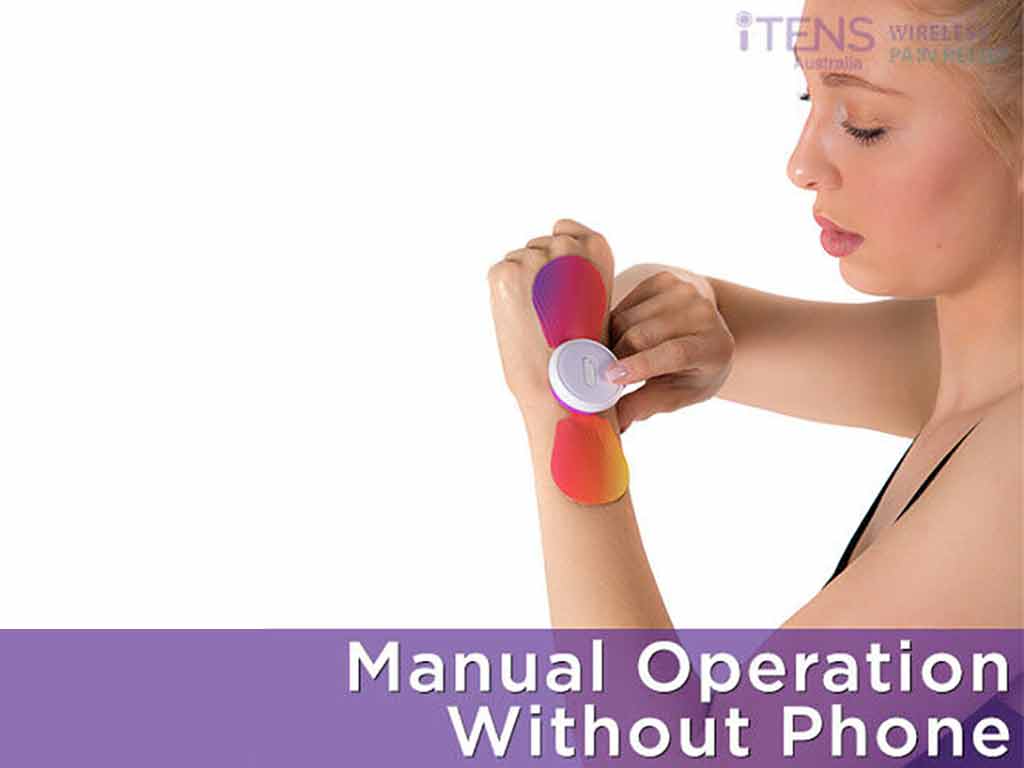
Effective pain management is attainable using the right strategies and methods. Transcutaneous Electrical Nerve Stimulation (TENS) is one of the techniques to relieve pain symptoms. It utilises a portable machine with adhesive pads to deliver mild electrical impulses to the body. Moreover, it can be a wireless or handheld TENS unit. Their main difference is the type of connection between the controller and the electrodes. Thus, it can influence pain management routines.
Doctors and physical therapists recommend TENS to help patients treat acute and chronic pain. It provides pain relief as well as facilitates rehabilitation of injuries. Therefore, it is versatile in many situations. Additionally, a TENS machine enables individuals to manage their symptoms in the comfort of their homes. In this article, you will learn about the functions of TENS and its benefits. The article will also present the features of wireless and handheld TENS devices.
The Functions of Wireless and Handheld TENS Units
People may opt for TENS devices as a natural alternative to medicines. They may use them anytime as soon as pain symptoms begin. In addition, these machines are easy to manipulate using adjustable controls. However, it may differ based on the type of TENS device – wireless and handheld TENS units. Nevertheless, TENS works in the same way: delivers electrical currents through the skin to stimulate the nerves.
A TENS machine uses different frequency levels or pulse rates to reduce pain. In high-frequency TENS (50 Hz and above), the electrical currents stimulate the nervous system to override pain signals in the spinal cord. The nerve fibres that control the gating mechanism block the signals from reaching the brain. On the other hand, low-frequency output (10 Hz and below) prompts the release of natural painkilling chemicals, endorphins. As a result, the brain processes fewer pain messages.
Wireless and handheld TENS units are more portable than devices found in clinics and therapy centres. Also, despite using electricity, they are safe for personal use. They are battery-powered with regulated currents. Therefore, it minimises the possibility of shocks or further injuries. Operating them is also easy. It has easy guidelines which help assure safe and effective use. Furthermore, it helps treat a wide range of pain conditions.
What Conditions Can TENS Treat?
A TENS machine helps alleviate pain from the following body aches and ailments:
- Musculoskeletal pain – muscle spasms, fibromyalgia, stiffness, tendon and ligament tears, stress fractures
- Joint pain – arthritis, gout, bursitis, plantar fasciitis, pain in the ankles, shoulders, elbows, and knees
- Nerve pain – pinched nerves in the neck and lower back

Features of the Handheld TENS Units
The primary distinction between wireless and handheld TENS units lies in the type of electrodes they use. A traditional handheld device utilises wired TENS pads. A single-channel TENS device connects to two adhesive pads, while a dual-channel connects to four. Moreover, the handheld controller comes equipped with dials or buttons that allow users to adjust the settings. You may press the up and down buttons to modify the intensity and frequency levels.
In addition to adaptable settings, portable TENS devices also have automatic modes. These are built-in programs with fixed parameters. Therefore, users can select a specific treatment from the device without manually adjusting the settings. For wired TENS units, these are accessible by pressing a pain mode button several times until reaching the target treatment. Furthermore, the TENS pads come in standard square, rectangular, and circular shapes. You may replace the pads in different sizes to fit a specific body part.
Individuals using a traditional handheld TENS unit are familiar with the inconvenience of the lead cables. It requires assembling the device before use. Ensure to plug the wires all the way in from the control unit into the receiving connector of the adhesive pads. Additionally, wires may restrict movement. Users often have to hold the remote control during treatment or use neck cords. Therefore, it may get in the way of doing regular activities.
How to Operate a TENS Machine
In order to begin TENS treatment, here are some general guidelines to follow:
- Position the electrodes on either side of the pain area.
- Turn on the device and start at the lowest setting.
- Gradually increase the intensity until reaching the desired level.
- After the session, turn the unit off before removing the pads.

Advantages of the Wireless TENS over Handheld TENS Units
Wireless TENS provides many advantages over handheld TENS units. Firstly, it maximises portability by eliminating lead cables. Therefore, it allows more flexibility to continue working or being active during pain relief treatments. Moreover, it is more discreet when worn under clothing. Secondly, it incorporates digital health technology for enhanced efficiency. A device like the iTENS has wireless electrodes that are Bluetooth-capable. Instead of wires, it connects to a smartphone app.
Thirdly, wireless TENS units have more contoured pads. In particular, the iTENS from iTENS Australia has wing-shaped electrodes. It enables them to grip easily, especially in joint areas. The electrode pads are interchangeable, and you may fit small or large wings. In addition, it allows for a quick start of the therapy since it does not need extra time to set up the wires. At the start of pain, users can directly adhere the electrodes and start the treatment.
Lastly, wireless TENS provides more pain programs than handheld TENS units. For the iTENS, the device connects remotely to a smartphone via Bluetooth. The app contains user-friendly functions, such as manual and pre-set modes. For manual operation, the settings are customisable. On the other hand, the pre-set modes are designed according to specific body parts and common health disorders. Moreover, the app has a friendly interface, making it easier to operate the device.
Wireless TENS Options at iTENS Australia
You may get the following wireless TENS devices at iTENS Australia:
- Small wing kit – for joints and narrow body parts, like the hands, ankles, and elbows
- Large wing kit – for broad pain coverage like the back
- Long strip wings (accessory only) – for elongated treatment areas like IT bands
- Refill gel pads – all sizes
Conclusion
TENS machines are cost-effective therapy devices that aid in pain relief. They come in two main types, wireless and handheld TENS units. For standard TENS, the electrodes are connected through lead cables. A handheld remote consists the adjustable settings and programs. In contrast, a wireless TENS machine is more lightweight and compact. Instead of wires, the electrodes are Bluetooth-capable. They connect to a wireless remote or smartphone app to access more functions.
Choosing a device will depend on a person’s preference. For some people, dealing with wires can be inconvenient. Therefore, they prefer wireless TENS machines, like the iTENS. Wireless units do not require additional set-up. They allow users to start treatment immediately. Furthermore, it eliminates the need for constant wire replacement due to breakage, making it more cost-efficient in the long run. You may purchase the innovative wireless iTENS at iTENS Australia online.




















